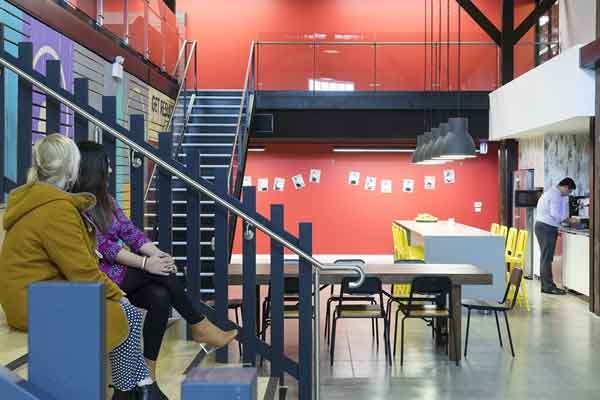Getting the team on Board

Although you may have a small team of stakeholders who are intrinsically involved in the decision-making and fit-out journey, it is important not to overlook the whole team and business and how important this move or refurbishment is for them.
Unfortunately, it’s a fact that people fear change, get stuck in their habits and can be quite territorial about their personal workspace. Often companies use a move to make significant changes to the way they work. This could be activity based working, hot-desking, a paperless environment, or even large social break-out areas which the more traditional worker may see as a waste of space or that people waste their time in.
The next step is to ensure you take your team on the journey with you, every step of the way. By achieving buy-in and being transparent, you will negate the chance of negativity when you do move.
While space planning, it is likely that you will end up with a variety of zones for different type of activity. Teach the team how they can use these spaces and talk them through each zone so that they have the power to choose the space they need for their activity that day. They may have concentrated work to do and therefore will need a quiet zone with minimal talking and no phone calls to be made. On the other hand, the sales and marketing team may be working on a project together and require a brain storming area and a workzone where they can freely talk and discuss and collaborate. Movable meeting areas are often used in more agile work environments. These spaces are great for semi-private catch ups and discussions. Many now come with built in power and screens so you can view work live and collaborate. Different areas will help people to work at their most productive.
Take suggestions seriously – It is good to engage the team by requesting a wish list for their new environment. The wider team will be using the space every day, so they may bring ideas to the discussion that have not previously been thought of. Take their ideas on board; their ability to work productively is of vital importance so make sure they have the requirements they need to perform at their best. This could be as easy a suggestion of providing more desks with double screens instead of laptop based work. With the sales team might just require a small laptop or tablet, the account team may need two screens to work effectively.
Address their concerns – it is likely that your team will vary in age and personality. It is important to bring the more traditional people along with the vision. Reassure them that the new ideas and processes are to make their work-life better, not more difficult. It is good idea to make a few people in the business ambassadors for the change, and by involving someone with initial apprehensions will give them a feeling of involvement and understanding.
Finally, talk to your fit-out team about getting plans of the proposed space to put up in your current office. By building the anticipation and excitement, it will mean that the changes are accepted more smoothly.





